Why Your Face Ages and what You can Do?
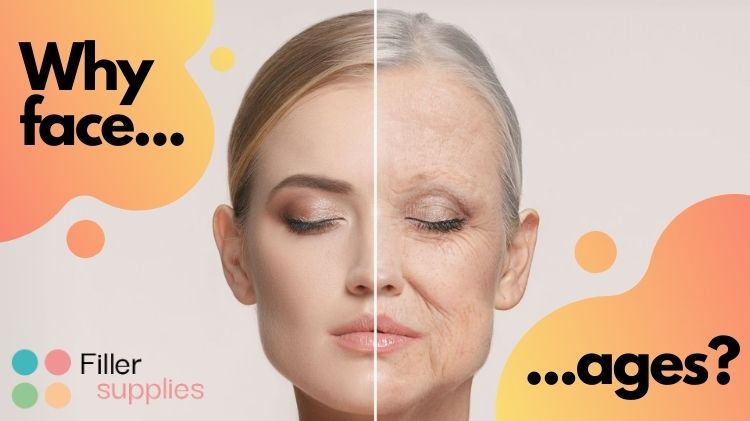
Are you scared of aging? Because a lot of people are. They can be basically divided into those who think of it as something abstract and distant and those who check their skin every day on a regular basis. The truth is that all of us age, and you will never be as young as you are now. But this is no way a reason to worry, get upset, and think about a fatal ending. This is a natural and inevitable process that no one can either stop, prevent, or avoid.
However, it does not mean you cannot look good and attractive, because you definitely can remain beautiful and healthy at any age. Coco Chanel once said that in your 20ies, you have the face given by nature, in 30ies, the face you have made by yourself, and in 50ies, the face you deserve.
There is definitely a piece of truth in these words, as your devotion to your skin and health and effort can help you to preserve a younger-looking skin, and on the contrary, violation of some basic skin care rules may ruin even a genetically nice and young appearance. But first things first!
What is aging?
The phenomenon that everybody is so scared about is just a sequence of slow consecutive, and gradual changes that take place in our organisms, starting at the cellular level and reflecting on our health condition and appearances. These changes are not groundless and are caused by serious internal and external factors. First of all, the inner processes considerably slow down. In your 20ies, you can hardly notice any even subtle alterations, but believe me, they are already launched.
Starting with your 25 (for some people, it is 27), the production of hyaluronic acid, collagen, elastin, and some other elements related to the skin’s elasticity and firmness decreases, launching the merciless and unstoppable engine of aging. However, the skin is not the only organ that changes: bones and muscles suffer too, and all together, they modify our appearance beyond recognition.
How does face changes with age?
Visible signs of skin aging
Skin is like a mirror that reflects our age and health. That is why we will focus on the looking of the skin first of all. There are three basic kinds of general skin aging related manifestations. Each of them affects the appearance of the face in its own way.
Wrinkles
The structure of the skin changes as we get older and wrinkles are one of the first featured visible structural signs that signal about the changes. The first wrinkles to appear are mimic wrinkles. These are skin creases in the places where we frequently contract the muscles during some facial expressions: laughing, smiling, pouting, frowning, and so on. Any of these expressions demand the movement and squeezing of the muscles. It squeezes the skin correspondingly, leaving a tiny crease. When the level of hyaluronic acid, collagen, and elastin in the tissues is sufficient, they quickly fill in the crease and even the relief directly after you relax the muscles. However, muscle memory makes these lines clearer and more visible. Wrinkles under the eyes and in the corners of the eyes, known as “crow’s feet,” appear among the first and are very easy to identify as the skin in this area is much thinner and tenderer. But mimic wrinkles also appear in the other areas: around the mouth (marionette lines), between the eyebrows, and on the forehead. The deeper wrinkles that go from the nose down to the mouse (nasolabial folds) mainly form as the result of a volume loss. Controlling your excessive facial expressions may help prevent premature mimic lines.
Loss of volume
This problem can be called sagging skin, blurred contours, goose skin, and so on. It implies the loss of volume in the tissues, redistribution of the fat layers and general (sometimes inexplicable) alterations of the appearance. When volume decreases, the skin starts to sag in separate areas. It is especially topical for the eyebrows, cheeks and cheekbones, jawline, chin, neck. The skin literary “slides” down, and the entire face starts looking sad, tired, sometimes angry. So people may understand another person’s expression wrong. It also leads to blurred contours and loss of defined oval of the face.
Loss of density
It is worth mentioning that the skin can possess different levels of density. The skin of oily or combined skin type is thicker than the normal one, while the dry skin type is the thinnest and ages faster than the rest three types. However, all of them lose their density with time, and unlike with loss of volume or wrinkles, loss of density affects the skin in general, irrespectively of the area on the face. How is it harmful? The pores may widen and become more noticeable. The red vessels appear under the skin. Wrinkles also become more pronounced and deeper. The skin gets more inclined to pigmentation and other related changes.
Reasons and factors for the signs of aging
Well, this process is not a result of the influence of one particular reason but rather of many external and internal causes. As the skin consists of 3 basic layers (epidermis, derma, and hypodermis), even minor changes on one of the levels lead to inevitable modification on the next one. Understanding all possible contributors to this process may help you to elaborate a complex approach to skin care and aging prevention even without the help of a dermatologist.
Epidermal layer
It is the upper layer of the skin. Slower rejuvenation of the skin cells means that the danger of roughness and dryness of the skin increases. When getting older, this dermal layer becomes more sensitive to sun damage and U rays. In the epidermis, regeneration processes are slowed down, and a decrease in immune health function can lead to an increased likelihood of skin infection, as well as slower wound healing.
Dermis layer
Starting with the age of 25, the skin losses the number of collagen in the quantity of 1% annually, and it is one of the most important skin’s “building blocks”. Together with the decrease of elastin, it leads to the disorganization of the tissues. The structure of the skin is violated, and the risk of appearance of wrinkles rises. The skin elasticity also decreases, making the skin more vulnerable to capillary damage and rupture. Decreased blood flow parameters mean that the delivery of nutrients and oxygen to the skin’s surface becomes less efficient. It results in a reduction in the blush that is usually inherent in young skin.
Subcutaneous layer
In the deeper layers, the most noticeable changes occur in the size and number of fat cells that store lipids. This reduction affects volume loss like a domino effect, which in turn can lead to deep wrinkles, sunken cheeks, and impaired wound healing.
Internal factors of how the face ages
Some of the reasons for the face to age are inevitable and impossible to prevent. Our biological age and health condition determine all the structural changes in the skin and the effectiveness of cellular functions, which are getting slower and slower with every year.
Weak blood flow
Blood transfers all important elements and ingredients necessary for a healthy and glowy look of our skin. When oxygen together with vitamins and minerals supplies to the upper layers of the dermis are insufficient, it starts to look darker, duller, and less radiant.
Heredity
Our genes play a crucial role in the way of how the face ages. The ethical belonging and skin type determine how fast the first signs of aging will appear on the surface of the skin. Thus, fair skin, sensitive to light, soon obtains the first lines and wrinkles, while the darker complexion is inclined to uneven relief, pigmentation, deep wrinkles.
 External factors
External factors
All external factors that affect the speed of how we age have at their basis one process – oxidative stress. How is it dangerous? This process frees out the active forms of oxygen, the so-called free radicals. According to the aging theory, these molecules migrate in the body and can ruin the cells from the inside. A young organism can efficiently eliminate these molecules, but with time, when the inner processes slow down, and the number of free radicals considerably increases, the body is not able to cope with this task, and we start to age faster. At the same time, oxidative stress can be either accelerated or slowed down by our lifestyle.
Sun rays
Any dermatologist will tell you that the impact of sun exposure is one of the main external factors that influence aging due to oxidative stress. The skin sun damage can be caused both by prolonged and intermittent daily exposure to UV-rays that also has an impact on the uneven pigmentation.
Pollution
Skin contact with different kinds of pollution (that is especially topical for the citizens of cities and megapolises) can greatly boost the appearance of free radicals in the tissues. Moreover, pollution strengthens the impact of sun rays, accelerating oxidative stress.
Smoking
Chemical compounds and nicotine contained in cigarettes are also responsible for the growth of the number of free radicals in the organism. The same as pollutants, they also enhance the negative impact of solar radiation. So, the first medical advice not just for strong health but beautiful skin is to forget about cigarettes.
Nutrition
Antioxidants are molecules used to treat and neutralize free radicals. Many fresh fruits and vegetables contain these antioxidants, so a balanced diet may help to prevent and slow down oxidative stress. On the other hand, if you neglect your nutrition and do not consume a sufficient quantity of cellulose, you don’t give your skin a chance to be healthy and young-looking as long as possible.
Insufficient skin care
If you do not start using a cleanser, creams, sunscreen, and other cosmetic products that contain hyaluronic acid, collagen, and a cocktail of vitamins and minerals that suit your skin type and its needs, you risk getting facial wrinkles and other kinds of damage sooner than expected.
How can I make my skin look younger?
Lifestyle
As oxidative stress is the worst enemy of our youth and beauty, any changes in your lifestyle that are aimed to reduce this stress will have positive effects on your health and the look of your skin.
Nutrition
Good health, which is directly associated with the beautiful appearance of our skin, body, hair, and so on, depends on rich and balanced nutrition. Eat more fresh fruits and vegetables, drink enough water, make sure your diet is diverse and based on such products as carrot, apricots, oranges, blueberry, bell pepper, tomatoes, beans, fish, and nuts.
Smoking
Bad habits cause the decrease of elasticity and dullness of the complexion, as well as lung diseases, problems with blood flow, and other health-related issues that affect your skin. If you manage to quit smoking and other bad habits, you will return the healthy and young appearance of your face.
Anti-aging skincare
Regular daily care is an essential step if you want to look young and attractive for as long as possible, and the sooner you start, the better. Of course, all creams, cleansers, essences, masks, and other cosmetic products should perfectly suit your age, skin type, and the needs of your derma. That is why it is better to choose individual skincare treatments with a professional dermatologist. The important point here is using a sun protection remedy (sunscreen cream, a foundation with SPF, powder, or even mist) to protect your face from the negative effects of the sun.
What are the best cosmetology treatments for the aging face?
Fortunately, modern cosmetology and dermatology offer dozens of effective featured procedures and ways, using the latest technologies to strengthen all the above-mentioned points and rejuvenate the skin, eliminating the already appeared damages. Dermal fillers, botulinum toxin injections, and mesotherapy are among the most popular and effective procedures.
 What are botulinum toxin injections?
What are botulinum toxin injections?
Botulinum toxin is a base for such popular remedies as Botox, Dysport, and Xeomin. It is used to treat mid and fine wrinkles caused by active facial expressions (mimic wrinkles, in other words). By neutralizing and blocking the nerve endings, the toxin relaxes the muscles, makes the tension in the tissues decrease, and results in smoothing out of the wrinkles. The effects after botulinum toxin treatment may last from 4 to 6 months maximum. During this time, the nerves grow new endings and renew their ability to contract. Using this technique helps to get rid of creases on the forehead, between the eyebrows, and under the eyes.
Are dermal fillers with hyaluronic acid good for your skin?
Dermal fillers are injectable medical solutions with hyaluronic acid, calcium hydroxide, or poly-L-lactic acid. Right now, they are considered to be safe and one of the best modern ways to rejuvenate the skin and help to prevent the appearance of wrinkles, loss of volume, and so on. For quick, visible results, hyaluronic acid suits the best. Injections with this ingredient quickly fill in all hollow areas in the skin, eliminating wrinkles, deeper folds, restoring the lost volume, hydrating the tissues from inside, providing a healthy, glowy, and beautiful look that may last for 9-18 months.
Another advantage of the hyaluronic acid treatment is the ability of facial sculpting: plumping lips and correction of the lips contours, define of the cheekbones and jawline, strengthening of the nose, chin enlargement, and so on.
Anti-aging injection of calcium hydroxide or poly-L-lactic acid helps to boost inner collagen production and rejuvenation of the tissues from inside. It takes a longer time as all the changes happen on the cellular level, so the first really visible improvements will be noticeable approximately at the end of the second month after the injection. A dermatologist may recommend these fillers for the patients who struggle to achieve maximum naturally-looking results: even skin relief, no wrinkles or folds, the restored volume of the tissues, excellent hydration and radiance. By the way, their effects last up to 24 months.
Mesotherapy anti-aging medical treatment
This rejuvenation procedure is aimed to enrich your skin with all the necessary components that help prevent and fight the effect of years. These injectable cocktails are different and may consist of hyaluronic and other acids, vitamins, minerals, herbal extracts, and other elements to nourish, hydrate, supplement, and strengthen the skin tissues from inside. This procedure is especially effective for dry skin and fine lines elimination, masking your face well maintained, healthy, young, and beautiful.
Final Word
There are so many internal and external causes that may force our skin to age: unbalanced nutrition, poor skin care, environmental pollution, sun, bad habits, stress, lack of sleep, and genetics, of course. Some of them you can manage and improve, take care of your health, adjust your lifestyle, and use sunscreen to protect and minimize the impact of the external factors. For all other cases, you live in such a wonderful era of advanced featured technologies and medicine. Professional dermatologists are ready to offer you dozens of ready solutions and medical advice on how to improve the condition of your skin. Botulinum toxin, dermal fillers, mesotherapy, cosmetic threads, lasers… This is just a short list of the best possible ways to eliminate wrinkles, lines, and other possible imperfections, leveling the impact of years, so no one could guess how old you actually are.
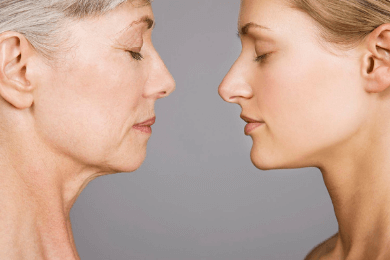
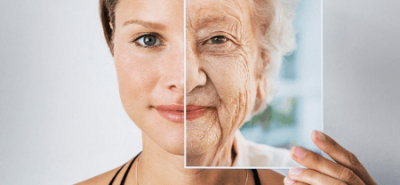
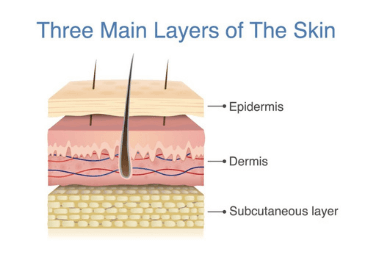
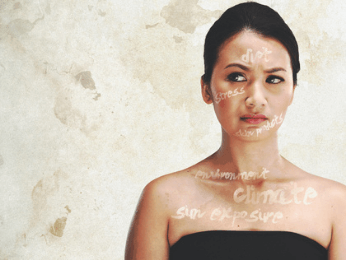 External factors
External factors What are botulinum toxin injections?
What are botulinum toxin injections?